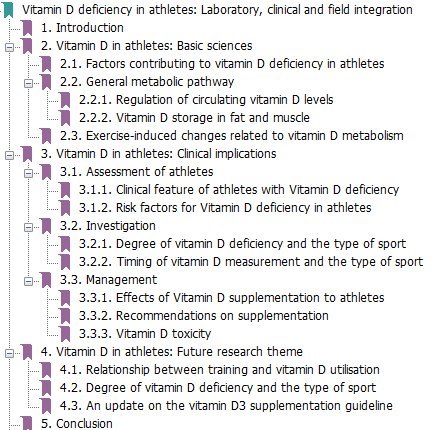Low Vitamin D 2X more likely in power-sport athletes
Vitamin D deficiency in athletes: Laboratory, clinical and field integration
Tina Shuk-Tin Ip a , Sai-Chuen Fu b, Michael Tim-Yun Ong b, Patrick Shu-Hang Yung b
Asia-Pacific Journal of Sports Medicine, Arthroscopy,Rehabilitation and Technology
https://doi.org/10.1016/j.asmart.2022.06.001
PDF Table of Contents

Possible reasons for low D in athletes

Vitamin D deficiency is highly prevalent in athletes. Increased utilisation and storage depletion may be key contributing factor. We found a higher prevalence of vitamin D inadequacy (deficiency/ insufficiency) in power than endurance sport athletes, which may be related to vitamin D utilisation and reserve in skeletal muscles.
Conclusion
Vitamin D deficiency is highly prevalent in athletes. Increased utilisation and storage depletion may be an important contributing factor for the high prevalence of vitamin D inadequacy in power sport (65.4%) compared to endurance sport (32.9%) athletes . Clinical feature of athletes at risk of vitamin D deficiency include:
(1) female athletes with amenorrhea,
(2) jumping sport athletes with a history of previous stress fracture,
(3) indoor sport athletes who require weight-maintenance, and
(4) collegiate athletes with busy schedules.
Ideally, serum 25(OH)D level should be assessed at least twice yearly in any athletes screened ‘at-risk’ — once in the early spring for the nadir and once in the late summer for a peak level. Supplemental oral vitamin D3 (cholecalciferol) may be tailored according to athlete’s serum 25(OH)D basal levels and predicted seasonal variation throughout a competitive sporting season. Prescription at doses higher than the official recommendations are acceptable from a safety perspective.
📄 Download the PDF from VitaminDWiki
VitaminDWiki - Overview Sports and vitamin D contains
{include}
VitaminDWiki - Sports category contains
{include}
